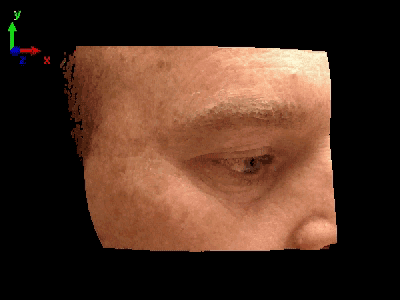16 November 2007—Digital facial models created from three-dimensional scans could give doctors a new diagnostic tool for identifying children with fetal alcohol spectrum disorders, a broad range of effects resulting from alcohol exposure in the womb. Although such children often have symptoms common to other developmental disorders, they require different interventions, and better diagnostics could help more kids get the right treatment.
Unlike other disorders such as Down syndrome, children with fetal alcohol syndrome—the severe form of the disorder that affects two in 1000 children in the United States but more than 20 times that in some other countries—lack genetic or biochemical markers of their condition. Affected children are often hyperactive, learn slowly, and have difficulty with social situations. But none of these symptoms is unique to prenatal alcohol exposure.
To make a diagnosis, experts called dysmorphologists rely on identifying specific facial features, growth deficits, and cognitive difficulties. Just as behavioral indicators are not unique to fetal alcohol syndrome, dysmorphologists can’t use any single feature to reliably assess a child’s face. Instead, they look for a signature combination of features that include small eye openings, a thin upper lip, and a smooth area between the lips and nose that, together, indicate an abnormality.
Unfortunately, this approach doesn’t work for all patients. The severity of the facial indicators varies, depending on both the amount and timing of prenatal alcohol exposure and the patient’s natural susceptibility, which means that less severe cases are difficult to detect. In addition, such facial characteristics of the exposure differ among ethnicities, which means the disorder can be underdiagnosed in some populations.
”There’s really a need to make the diagnosis more objectified,” says Dr. Elizabeth Moore, a research scientist at St. Vincent Hospital in Indianapolis and lead author of the study published in the October issue of Alcoholism: Clinical & Experimental Research . In search of a more universal diagnostic method, a consortium of doctors in the United States, Finland, and South Africa has started using measurements from three-dimensional laser scans.
FULL VIEW
A 3D image made using a Konica Minolta laser scanner. Doctors recently found a better way of diagnosing fetal alcohol syndrome using such scanners.
Moore and her collaborators used a commercial 3-D laser scanner to take six images of each child, two from the front, and two from each side. The scanner captures depth data accurate to less than a millimeter by scanning a low-intensity, ”eye safe” laser line over the face while simultaneously capturing a low-resolution color picture. A camera in the scanner measures the time it takes the laser pulses to reflect back from the face. By combining this information with the known distance between the laser source and the camera, the software can calculate the 3-D coordinates for each point on the face and then overlay the color data. Moore and her team stitched three of these 3-D perspectives together to form one complete model. Collecting each image required less than a second, according to Moore, and the device was portable enough to set up in remote locations like a South African church.
Creating digital models provided the researchers with the ability to quantitatively measure and compare more facial features than a dysmorphologist typically looks for, without lengthening the patient’s exam. Moore examined each model and marked the location of 20 facial landmarks, such as the corners of the eyes. Customized software then measured 16 different distances between the various landmarks. In comparing measurements between children diagnosed with fetal alcohol syndrome and those in a control group, Moore and her team found that the best indicators of alcohol exposure varied by ethnicity. For example, while ear length served as a good discriminating characteristic for the South African population, it was not statistically significant for the group of African Americans.
Within each of four different ethnic groups in the 276-patient study, more than three-quarters of the diagnoses based on the digital measurements matched those of Dr. Kenneth Lyons Jones, one of the doctors who first identified fetal alcohol syndrome. According to Moore, the results demonstrate that the technique works for severe cases within different ethnicities. Now that they have proof of concept, she and her consortium hope to expand their studies to more age groups and ethnicities, as well as less severe cases.
Understanding how fetal alcohol syndrome features vary among ethnicities will help identify the disorder in countries where it’s more common and where there’s less access to experts, says Moore. Rates are high in South Africa, for instance, where more than 50 children per 1000 live births are affected.
”One possibility is telemedicine,” says Edward Riley, an expert in treating children with fetal alcohol syndrome at San Diego State University, ”where 3-D pictures can be sent to a diagnostic center anywhere in the world.”
Moore’s team looks to use the scanner on infants next, an important step in catching the disorder early. Most children aren’t examined for fetal alcohol syndrome until they exhibit behavioral and developmental problems in school at ages five to seven. ”The earlier you can intervene, the less the child falls behind, the better the outcome of the kid,” says Riley.
”This is a technology that has demonstrated some usefulness and shows a lot more potential,” he says.
